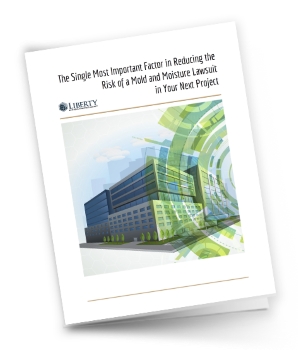As the building and construction industry continues to come out of the hibernation that has been the norm since 2009, it unfortunately appears that it’s déjà vu all over again when it comes to water-related building failures. As new buildings are being constructed, the same design and construction deficiencies of the past are being repeated, leading to (often catastrophic) mold and moisture problems.
It may seem somewhat unbelievable that the industry still finds itself making these same basic mistakes time after time. After all, preventative solutions to these issues have been understood and well-published for many years.
Part of the problem rests in the fact that during the Great Recession, a good number of the largest design and construction firms lost many key employees. As a result, the institutional knowledge that had formerly kept construction projects out of trouble disappeared along with these key thought leaders.
Since firms can no longer rely on legacy partners to deliver this information to the next generation, they must find good alternatives quickly, both for the sake of their projects and for the very viability of their own future. As an industry, we know that we can prevent buildings from failing because we are able to fix them once they do fail.
 One of the best and quickest fixes (and preventative measures) is the implementation of a third-party peer review. A peer review makes sure that design and construction firms get the right information to the right people at the right time, allowing them to address any potential issues from the earliest phases of a new building project.
One of the best and quickest fixes (and preventative measures) is the implementation of a third-party peer review. A peer review makes sure that design and construction firms get the right information to the right people at the right time, allowing them to address any potential issues from the earliest phases of a new building project.
The greatest risk of modular construction failures has occurred when this type of construction and delivery is used for hotels, student housing, senior living, or soldier housing – in general, facilities that are domicidal or multi-family in nature. The reason is because of inherent similarities in requirements for the living units of these types of facilities, such as an individual cooling/heating unit, bathroom exhaust, and some sort of central HVAC make-up air system. In addition, the abundance of modular boxes in these kinds of buildings increases the number of marriage wall interior cavities and ceiling-to-floor cavities that otherwise might not be required in other types of modular construction.
The premise behind this model is that at each stage in a project’s life (design, construction, and operation), crucial decisions must be made to avoid problems and control costs. When such choices are applied properly, the incidence of building problems substantially decreases and the initial construction cost or schedule is not affected. These achievements are made possible by eliminating many overly redundant and unnecessary building system components or procedures that often add nothing to the ultimate performance of a building.
Let’s look more closely at the importance of this model by examining a case study from modular construction. The emergence of modular construction as an option for new construction is becoming mainstream. The reasons have been reported on well. What has not been reported as widely, however, is that the modular construction industry has had its share of mold and moisture problems, especially in warm and humid climates like the Southeast U.S. Both wood frame and steel frame modular construction have experienced problems with condensation in crawl spaces, marriage walls, and ceiling-to-floor cavities, resulting in deterioration of the wood and wallboards, corrosion of metal floor pans, and proliferation of mold.
For the rest of the blog, visit Liberty Building Forensics Group's website.


Recent Comments
These are actually very helpful tips. It is...
This is the most beneficial blog for all...
This blog is a great resource for anyone...
Thank you for sharing this important information. I...
This is a very interesting subject of the...